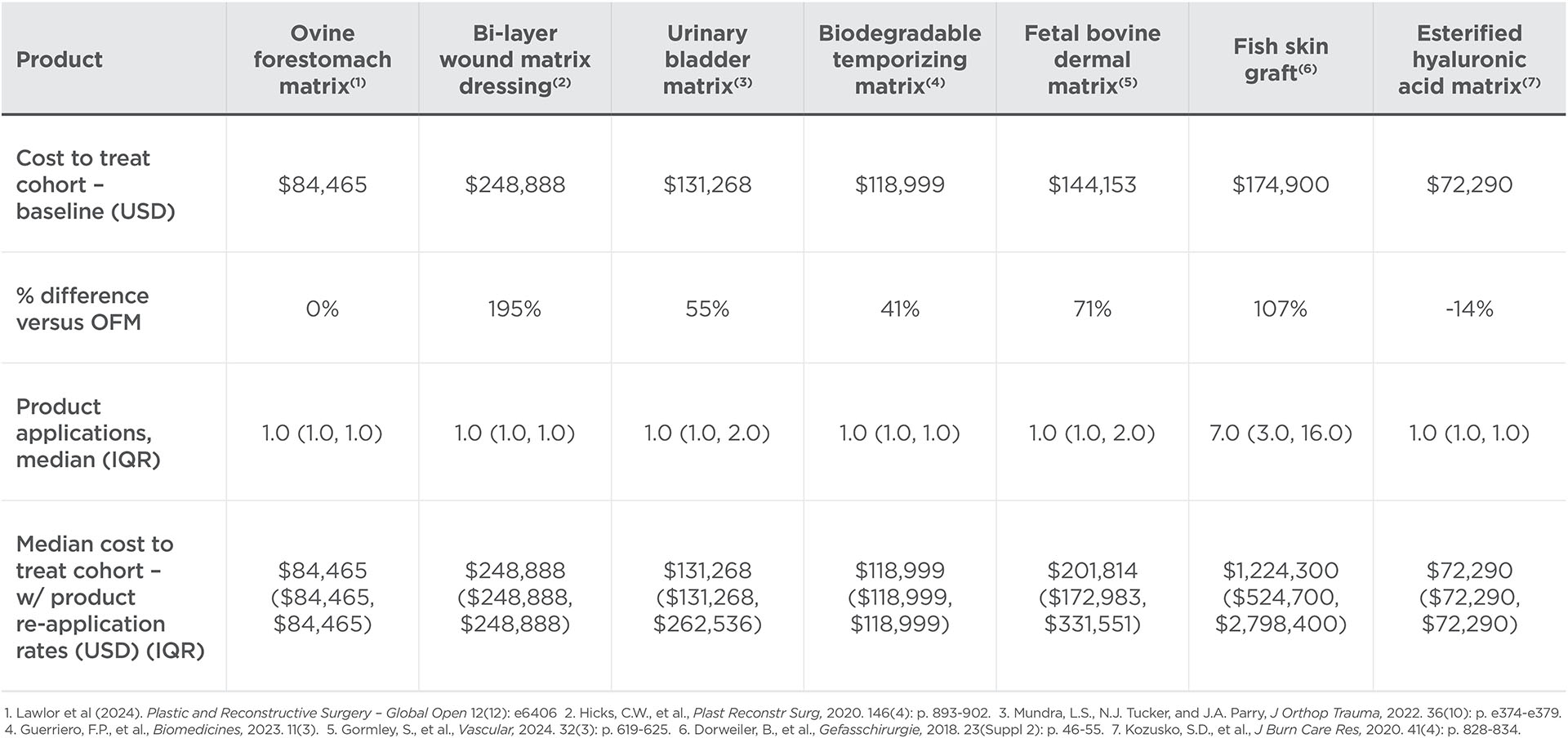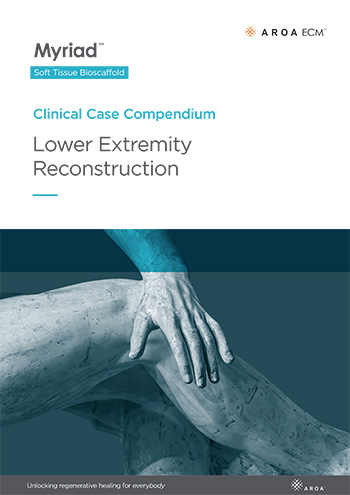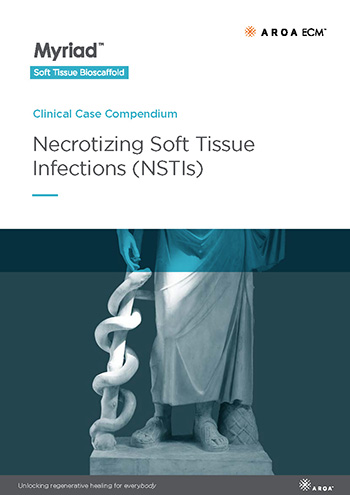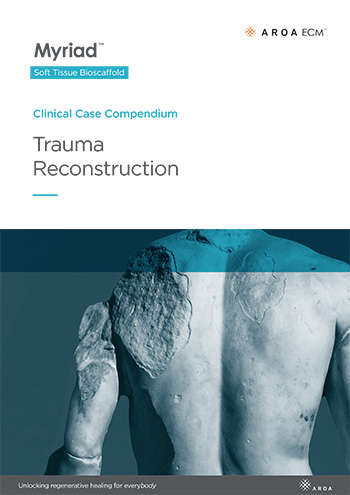In a new prospective study, Myriad achieved:
100% tissue coverage and fill in 30 days* with no infections1
In the largest real-world study of lower extremity reconstructions, Myriad delivered exceptional value @ $253.90 (USD)** per defect.
- 130 lower extremity defects in 120 patients
- Minimal exclusion criteria
- Patients at a high risk of amputation
*Median 30.0 days (IQR: 26.9, 33.1) **Median product cost
Key Study Takeaways

Patients were at high risk of amputation
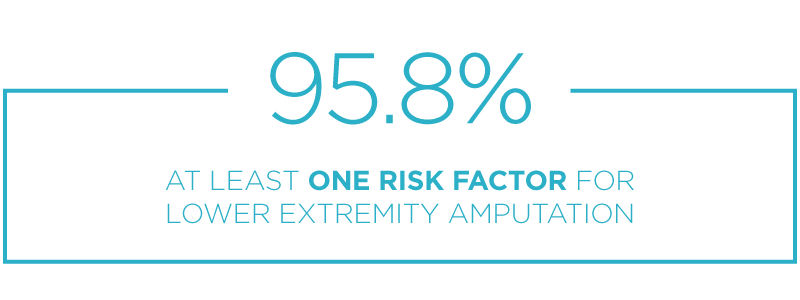
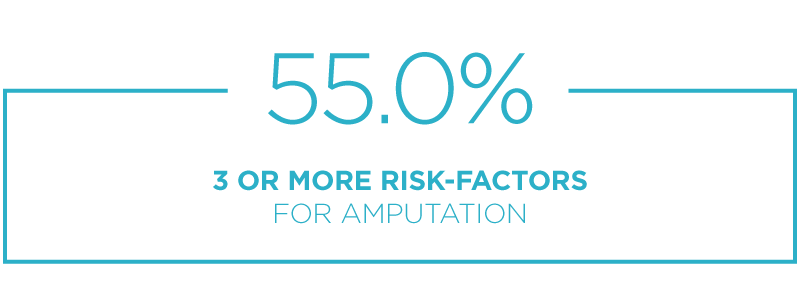
Related case studies
Intra-operative Defect
Post-op Week 12

Richard Kaufman, DPM, CWSP
CC.0037
Wide Excision
3 Months post STSG
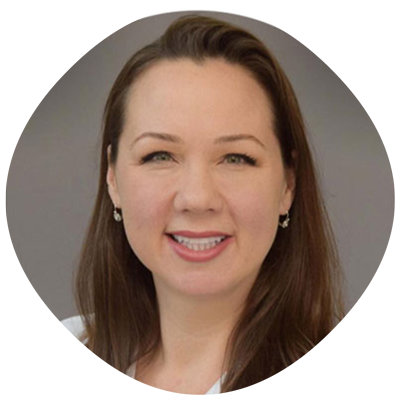
Abigail E. Chaffin, MD, FACS, CWSP, MAPWCA
CC.0078
Week 0
Week 11
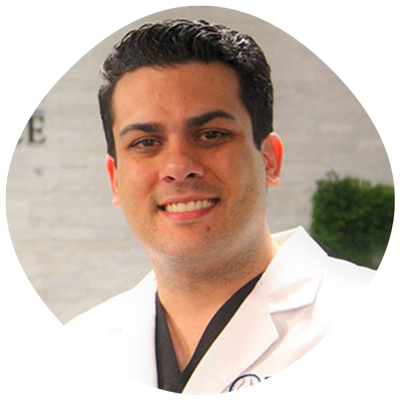
Anthony J. LaLama, DPM
CC.0149
Downloadable Resources
Find out more about Myriad use in lower extremity defects.
